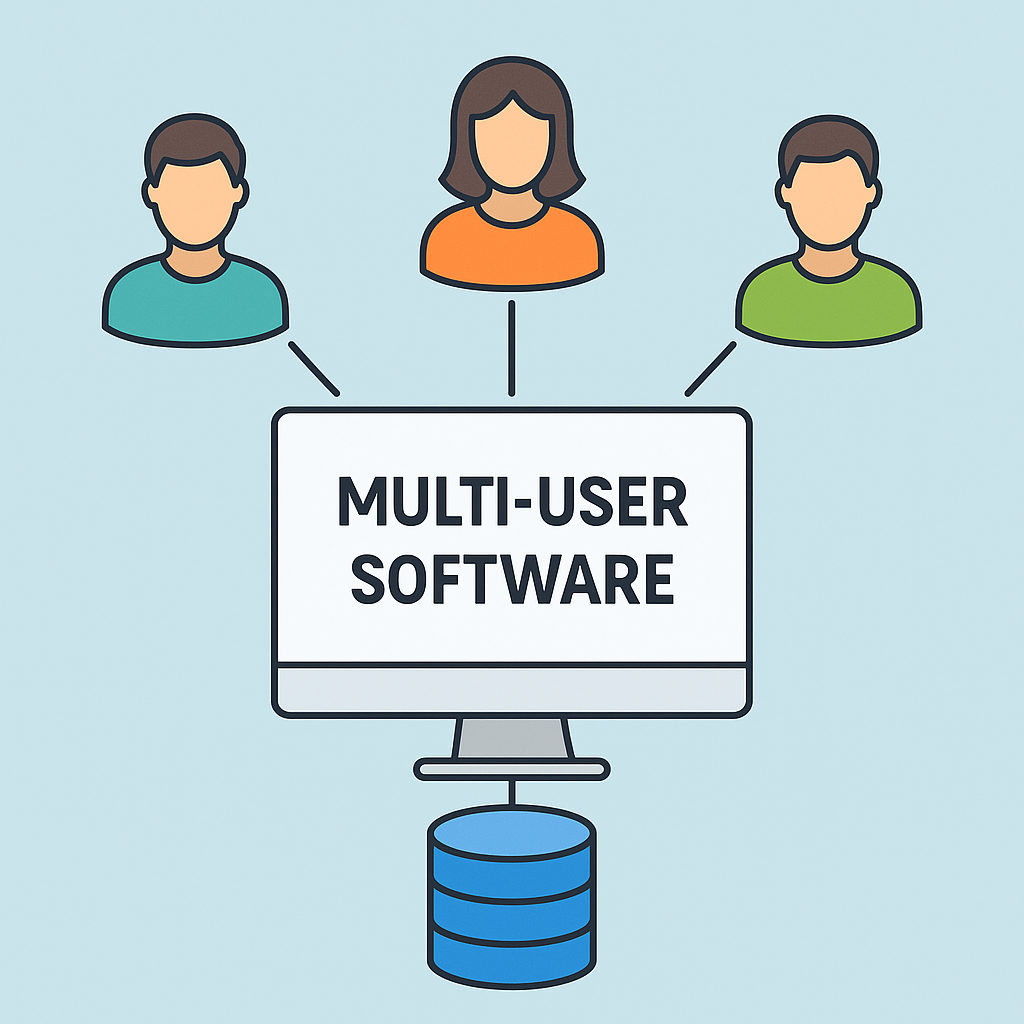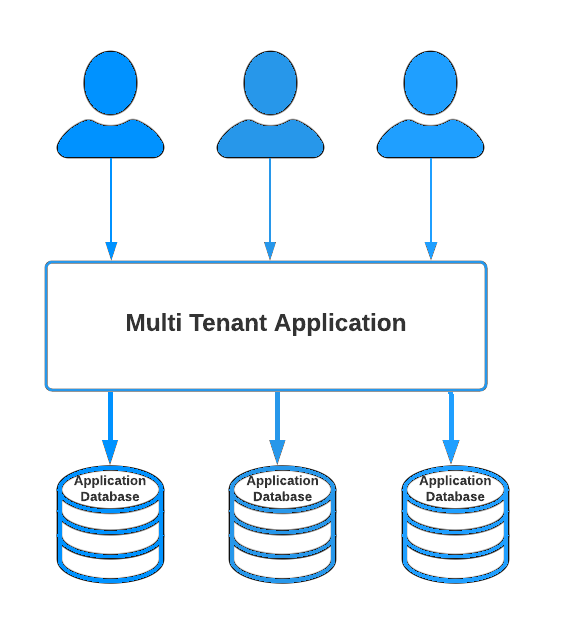Understanding the difference between multi-user and multi-tenant software is crucial for businesses selecting the right solution for their operational and scalability needs. Although the terms “user” and “tenant” are sometimes used interchangeably, they represent fundamentally different concepts, especially in the context of cloud computing and SaaS platforms.
👥 What is Multi-User Software?
Multi-user software refers to a system that allows multiple users to access and use the same application or system simultaneously. Each user can perform independent tasks, often with separate credentials, while using a shared system environment.
🔧 Key Characteristics:
- One instance of the software is shared among users.
- Users may have individual roles or permissions.
- All users operate within the same database or system environment.
- Designed for internal collaboration or operations.
💡 Example: Multi-User Operating Systems
A classic example is a multi-user operating system, such as Unix or Linux, which allows several users to work on the same system through networked terminals. Each user has their own session, files, and access permissions, but the underlying OS is shared.
Other examples include:
- Mainframe Systems and Servers – Used by banks, airlines, and large enterprises to process high-volume transactions.
- Accounting Software – Like Tally or QuickBooks, which can be accessed by multiple staff members within a company at the same time.


What is Multi-Tenant Software?
Multi-tenant software is a cloud-based architecture where a single instance of the application serves multiple customers (tenants). Each tenant is logically separated and has access to their own data and configurations, but they all share the same core codebase and infrastructure.
For detail about ICTBroadcast as Multi-tenant software visit : https://www.ictbroadcast.com/multi-tenant-autodialer-software/
🔧 Key Characteristics:
- One software instance serves many customers (tenants).
- Each tenant has isolated data and possibly customized UI or settings.
- No tenant can view or interfere with another tenant’s data.
- Commonly used in Software-as-a-Service (SaaS) applications.
🌐 Examples of Multi-Tenant Systems:
- Zendesk – Customer support SaaS used by thousands of businesses.
- ICTBroadcast – A multi-tenant autodialer platform for telecom services.
- Netflix – Serves personalized content to millions of users using shared infrastructure.
- Facebook – While each user has a personal experience, they all use the same underlying platform.


🧩 Key Differences Between Multi-User and Multi-Tenant Software
| Feature | Multi-User Software | Multi-Tenant Software |
|---|---|---|
| Primary Use Case | Internal access by multiple users | SaaS delivery to multiple clients |
| User Scope | Multiple users within the same organization | Multiple customers (tenants), each isolated |
| Data Isolation | Shared data or limited separation | Complete data isolation between tenants |
| Customization | Limited to user roles or settings | Tenants can customize themes, settings, workflows |
| Infrastructure | One system instance shared among users | One system instance shared among tenants |
| Security Concerns | Role-based access within the same environment | Tenant-level data isolation and security |
🧠 Final Thoughts
Both multi-user and multi-tenant architectures offer powerful solutions, but they cater to different needs:
- Choose multi-user software when you need collaborative internal access to shared systems within a single organization.
- Choose multi-tenant software when you need to serve multiple clients or organizations independently using a centralized SaaS platform.
Understanding these distinctions is essential when designing or adopting software systems, especially in cloud environments where scalability, data privacy, and cost-efficiency are top priorities.